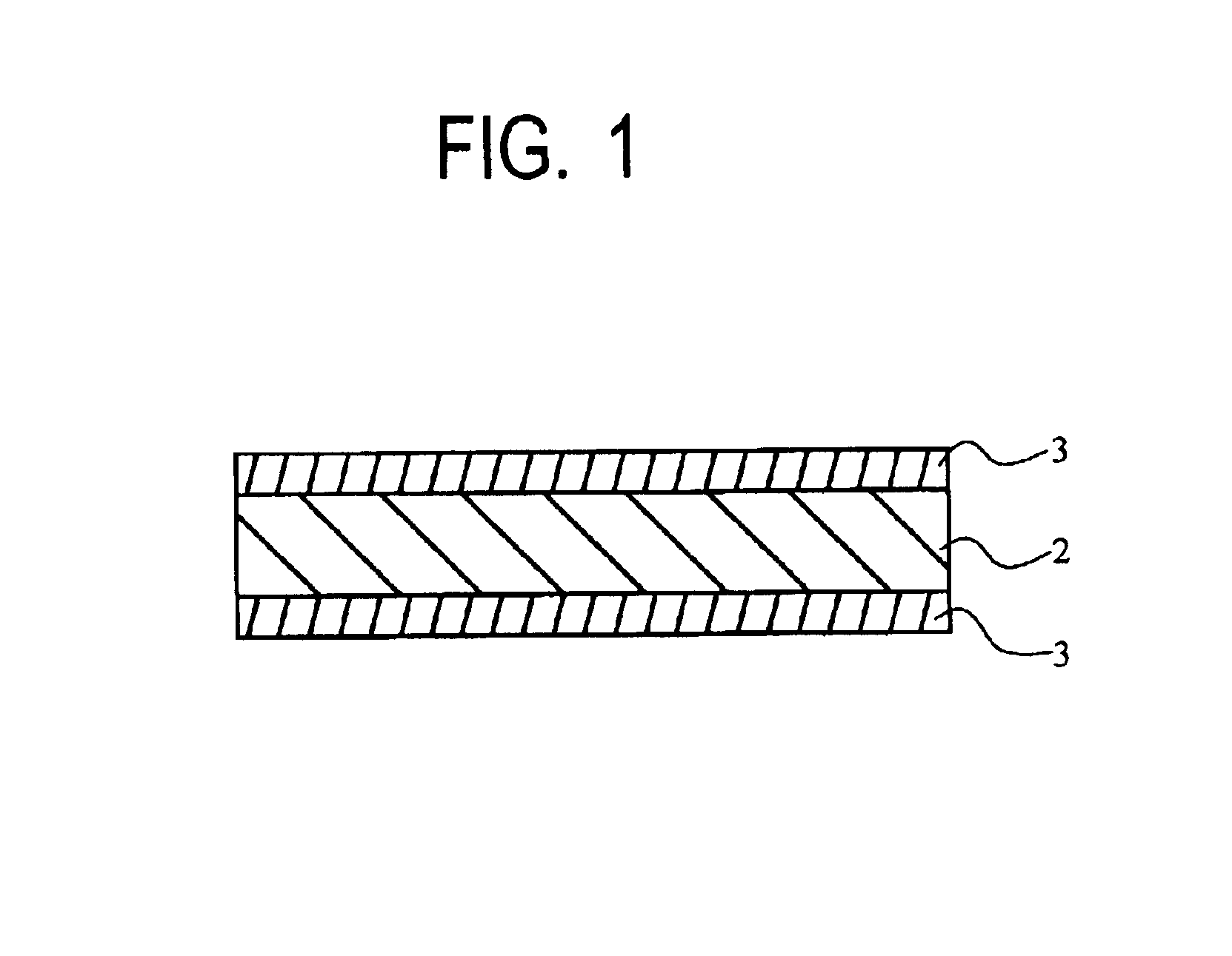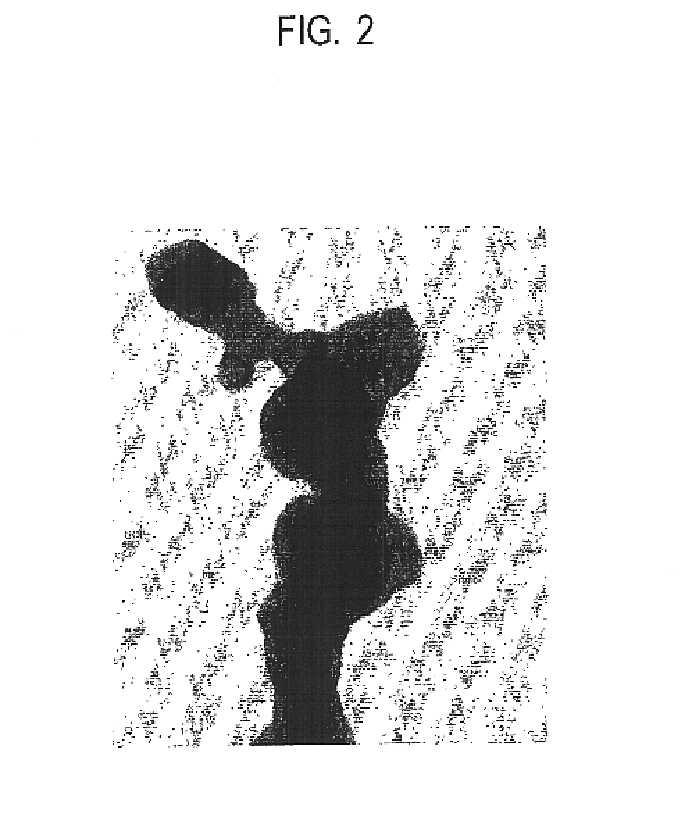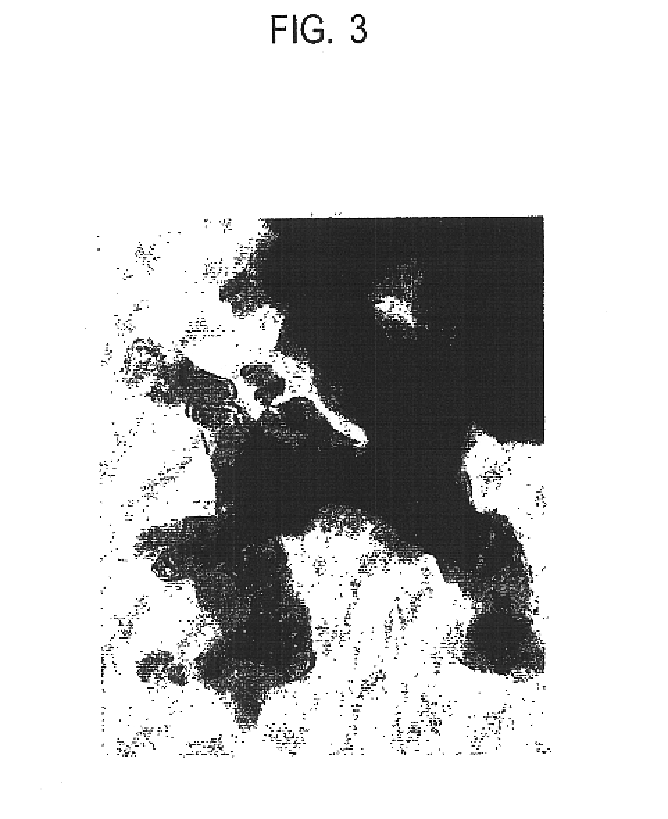Organic PTC thermistor and making method
a thermistor and positive temperature technology, applied in the direction of resistive material coating, heat measurement, instruments, etc., can solve the problems of lack of reliability in long-term storage or the like, inability to provide satisfactory characteristics for protecting overcurrent or overheating, and the stability of thermoplastic polymer matrix tends to diminish initial resistance stability
- Summary
- Abstract
- Description
- Claims
- Application Information
AI Technical Summary
Benefits of technology
Problems solved by technology
Method used
Image
Examples
example 1
The conductive metal particles used were filamentary nickel powder (trade name INCO Type 210 Nickel Powder by INCO Ltd.) having an average particle diameter of 0.5-1.0 .mu.m, an apparent density of 0.8 g / cm.sup.3, and a specific surface area of 1.5-2.5 m.sup.2 / g.
The nickel powder was dispersed in a 0.25% ethanol solution of polyethylene glycol (molecular weight 200, by Junsei Chemical Co., Ltd.), the amount of polyethylene glycol being 0.5% by weight based on the nickel powder, and agitated to form a slurry. Ethanol was evaporated off by means of an evaporator, leaving the surface treated nickel powder which was dried in vacuum. FIGS. 2 and 3 are TEM photomicrographs of the nickel powder before and after treatment.
A linear low-density polyethylene (trade name Evolue 2520 by Mitsui Chemicals, Inc., MFR 1.7 g / 10 min, mp 121.degree. C.) as the organic polymer matrix, the surface treated filamentary nickel powder, and paraffin wax (trade name Poly Wax 655 by Baker Petrolite, mp 99.degr...
example 2
A thermistor device was manufactured as in Example 1 except that polyglycerin (trade name Unigly G-2 by NOF Corp.) was used instead of the polyethylene glycol.
example 3
A thermistor device was manufactured as in Example 1 except that tetradecanol (trade name NAA-43 by NOF Corp., mp 38.degree. C.) was used instead of the polyethylene glycol.
PUM
| Property | Measurement | Unit |
|---|---|---|
| vapor pressure | aaaaa | aaaaa |
| operating temperature | aaaaa | aaaaa |
| temperature | aaaaa | aaaaa |
Abstract
Description
Claims
Application Information
 Login to View More
Login to View More - R&D
- Intellectual Property
- Life Sciences
- Materials
- Tech Scout
- Unparalleled Data Quality
- Higher Quality Content
- 60% Fewer Hallucinations
Browse by: Latest US Patents, China's latest patents, Technical Efficacy Thesaurus, Application Domain, Technology Topic, Popular Technical Reports.
© 2025 PatSnap. All rights reserved.Legal|Privacy policy|Modern Slavery Act Transparency Statement|Sitemap|About US| Contact US: help@patsnap.com



